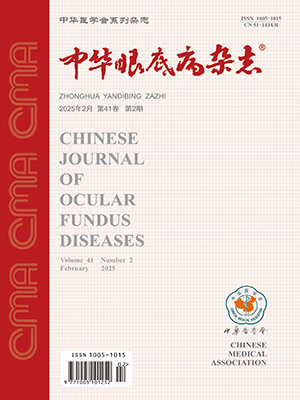| 1. |
Reibaldi M, Pulvirenti A, Avitabile T, et al. Pooled estimates of incidence of endophthalmitis afer intravitreal injection of anti-vascular endothelial growth factor agents with and without topical antibiotic prophylaxis[J]. Retina, 2018, 38(1): 1-11. DOI: 10.1097/IAE.0000000000001583.
|
| 2. |
Fileta JB, Scott IU, Flynn HW Jr. Meta-analysis of infectious endophthalmitis after intravitreal injection of anti-vascular endothelial growth factor agents[J]. Ophthalmic Surg Lasers Imaging Retina, 2014, 45(2): 143-149. DOI: 10.3928/23258160-20140306-08.
|
| 3. |
Davidov B, Ohayon A, Trivizki O, et al. Postintravitreal injection. endophthalmitis: incidence, characteristics, management, and outcome[J/OL]. J Ophthalmol, 2023, 2023: 9212524[2023-11-06]. https://pubmed.ncbi.nlm.nih.gov/37965437/. DOI: 10.1155/2023/9212524.
|
| 4. |
Rosenfeld PJ, Brown DM, Heier JS, et al. Ranibizumab for neovascular age-related macular degeneration[J]. N Engl J Med, 2006, 355(14): 1419-1431. DOI: 10.1056/NEJMoa054481.
|
| 5. |
Friedman DA, Mason JO 3rd, Emond T, et al. Povidoneiodine contact time and lid speculum use during intravitreal injection[J]. Retina, 2013, 33(5): 975-981. DOI: 10.1097/IAE.0b013e31 82877585.
|
| 6. |
De Kaspar HM, Chang RT, Shriver EM, et al. Three-day application of topical ofloxacin reduces the contamination rate of microsurgical knives in cataract surgery: a prospective randomized study[J]. Ophthalmology, 2004, 111(7): 1352-1355. DOI: 10.1016/j.ophtha.2003.10.032.
|
| 7. |
Aiello LP, Brucker AJ, Chang S, et al. Evolving guidelines for intravitreous injections[J]. Retina, 2004, 24(5 Suppl): S3-19. DOI: 10.1097/00006982-200410001-00002.
|
| 8. |
Jaissle GB, Szurman P, Bartz-Schmidt KU. Recommendation for the implementation of intravitreal injections–statement of the German Retina Society, the German Society of Ophthalmology (DOG) and the German Professional Association of Ophthalmologists (BVA)[J]. Klin Monbl Augenheilkd, 2005, 222(5): 390-395. DOI: 10.1055/s-2005-858231.
|
| 9. |
Moss JM, Sanislo SR, Ta CN. A prospective randomized evaluation of topical gatifloxacin on conjunctival flora in patients undergoing intravitreal injections[J]. Ophthalmology, 2009, 116(8): 1498-1501. DOI: 10.1016/j.ophtha.2009.02.024.
|
| 10. |
Miller KM, Oetting TA, Tweeten JP, et al. Cataract in the adult eye preferred practice pattern[J]. Ophthalmology, 2022, 129(1): 1-126. DOI: 10.1016/j.ophtha.2021.10.006.
|
| 11. |
Sigford DK, Reddy S, Mollineaux C, et al. Global reported endophthalmitis risk following injections of anti-VEGF: a literature review and analysis[J]. Clin Ophthalmol, 2015, 9: 773-781. DOI: 10.2147/OPTH.S77067.
|
| 12. |
Wykoff CC, Flynn HW Jr, Rosenfeld PJ. Prophylaxis for endophthalmitis following intravitreal injection: antisepsis and antibiotics[J]. Am J Ophthalmol, 2011, 152(5): 717-719. DOI: 10.1016/j.ajo.2011.07.002.
|
| 13. |
Ta CN, Singh K, Egbert PR, et al. Prospective comparative evaluation of povidone-iodine (10% for 5 minutes versus 5% for 1 minute) as prophylaxis for ophthalmic surgery[J]. J Cataract Refract Surg, 2008, 34(1): 171-172. DOI: 10.1016/j.jcrs.2007.08.035.
|
| 14. |
Li B, Nentwich MM, Hoffmann LE, et al. Povidone-iodine 1.0%, 5.0%, and 10.0% as preoperative prophylaxis before cataract surgery[J]. J Cataract Refract Surg, 2013, 39(7): 994-1001. DOI: 10.1016/j.jcrs.2013.02.039.
|
| 15. |
Pinna A, Donadu MG, Usai D, et al. In vitro antimicrobial activity of a new ophthalmic solution containing povidone-iodine 0.6%(IODIM®)[J/OL]. Acta Ophthalmol, 2020, 98(2): e178-e180[2019-09-05]. https://pubmed.ncbi.nlm.nih.gov/31486592/. DOI: 10.1111/aos.14243.
|
| 16. |
Zamora JL. Chemical and microbiologic characteristics and toxicity of povidone-iodine solutions[J]. Am J Surg, 1986, 151(3): 400-406. DOI: 10.1016/0002-9610(86)90477-0.
|
| 17. |
Trost LW, Kivilcim M, Peyman GA, et al. The effect of intravitreally injected povidone-iodine on Staphylococcus epidermidis in rabbit eyes[J]. J Ocul Pharmacol Ther, 2007, 23(1): 70-77. DOI: 10.1089/jop.2006.0076.
|
| 18. |
Jiang J, Wu M, Shen T. The toxic effect of different concentrations of povidone iodine on the rabbit’s cornea[J]. Cutan Ocul Toxicol, 2009, 28(3): 119-124. DOI: 10.1080/15569520903080511.
|
| 19. |
Barry P, Cordovès L, Gardner S. European Society of Cataract and Refractive Surgeons. ESCRS Guidelines for prevention and treatment of endophthalmitis following cataract surgery: data dilemmas and conclusion[M/OL]. Blackrock, Co: Dublin, 2013: 2. https://www.escrs.org/media/uljgvpn1/english_2018_updated.pdf.
|
| 20. |
Olson RJ, Braga-Mele R, Chen SH, et al. Cataract in the adult eye preferred practice pattern®[J]. Ophthalmology, 2017, 124(2): P1-P119. DOI: 10.1016/j.ophtha.2016.09.027.
|
| 21. |
Hunyor AP, Merani R, Darbar A, et al. Topical antibiotics and intravitreal injections[J]. Acta Ophthalmol, 2018, 96(5): 435-441. DOI: 10.1111/aos.13417.
|
| 22. |
Milder E, Vander J, Shah C, et al. Changes in antibiotic resistance patterns of conjunctival fora due to repeated use of topical antibiotics afer intravitreal injection[J]. Ophthalmology, 2012, 119(7): 1420-1424. DOI: 10.1016/j.ophtha.2012.01.016.
|
| 23. |
Bhavsar AR, Stockdale CR, Ferris FL 3rd, et al. Update on risk of endophthalmitis after intravitreal drug injections and potential impact of elimination of topical antibiotics[J]. Arch Ophthalmol, 2012, 130(6): 809-810. DOI: 10.1001/archophthalmol.2012.227.
|
| 24. |
De Caro JJ, Ta CN, Ho HK, et al. Bacterial contamination of ocular surface and needles in patients undergoing intravitreal injections[J]. Retina, 2008, 28(6): 877-883. DOI: 10.1097/IAE.0b013e318 16b3180.
|




